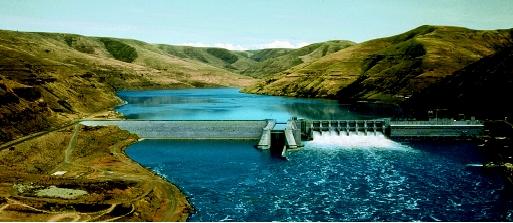Norway
In Norway, hydroelectric power contributes to 99% of all electricity used. Norway, along with Canada and China, is one of the world's top hydroelectric power creating countries. Norway's hydroelectric power accounts for nearly 5% of all hydroelectric power created worldwide. The country has installed over 850 hydroelectric plants, because Norway has a very convenient topography for hydroelectric power creation. Norway experiences heavy rainfall due to its geographical location and its mountains allow many opportunities to create dams for hydroelectric power.

Norway also has a relatively large oil reserve of around 9.44 billion barrels. Norway mostly exports its oil, and consumes very little, making it one of the most environmentally clean countries in he world.
Iceland

Iceland is located along the Mid-Atlantic
ridge, where two oceanic plates are diverging, allowing hot lava to escape from
under the plates and cool as it rises. Iceland was formed from this uprising
of hot materials, and is continually atop the hot currents. This gives the
country great opportunity to use geothermal energy. About 87% of the Icelandic
population uses geothermal energy to heat their homes, and sometimes pools.
Because this is a renewable resource, and is so accessible to Icelanders, the cost of
heating is about half of what it would be using oil or electricity to heat. The
hot current from underground are used to heat up large amounts of water which
in turn heat the houses. Also, the steam generated from geothermal energy has
recently began to be used to create electricity using turbines. This is still
only on a small scale, but Iceland plans on increasing the electricity created
from geothermal steam.
Brazil

In 1970 there was an energy crisis, which made it difficult to obtain foreign oil for both Americas. During the crisis, Brazil invested a large amount of money in creating renewable resources plants. In 1980s, when there was a surplus of foreign oil, Brazil stuck to the renewable resources. Brazil grows a lot of sugarcane, which is cut down, shredded and crushed, creating grapa (the liquid expelled from the sugarcane). This is later distilled to create ethanol. This ethanol is mixed with gasoline to reduce the price of gasoline, or make a finite amount of gas last longer. Brazil and the United States are the two countries in the world that produce the most ethanol. Brazil's main feedstock is sugarcane, while the United States' is corn. Of the sugarcane cut to be used, only about 1/3 goes into ethanol. Another third consists of leaves and sugarcane tops which are unusable. The last third, called bagasse, is leftover from the ethanol production, because it is a fibrous material that remains from pressing the sugarcane. Burning the bagasse can generate electricity, which is used to help facilitate the ethanol plants. Brazil is a prime place for ethanol creation because it has lots of open land available for agricultural growth, and the climate is favorable for growing sugarcane all year round.